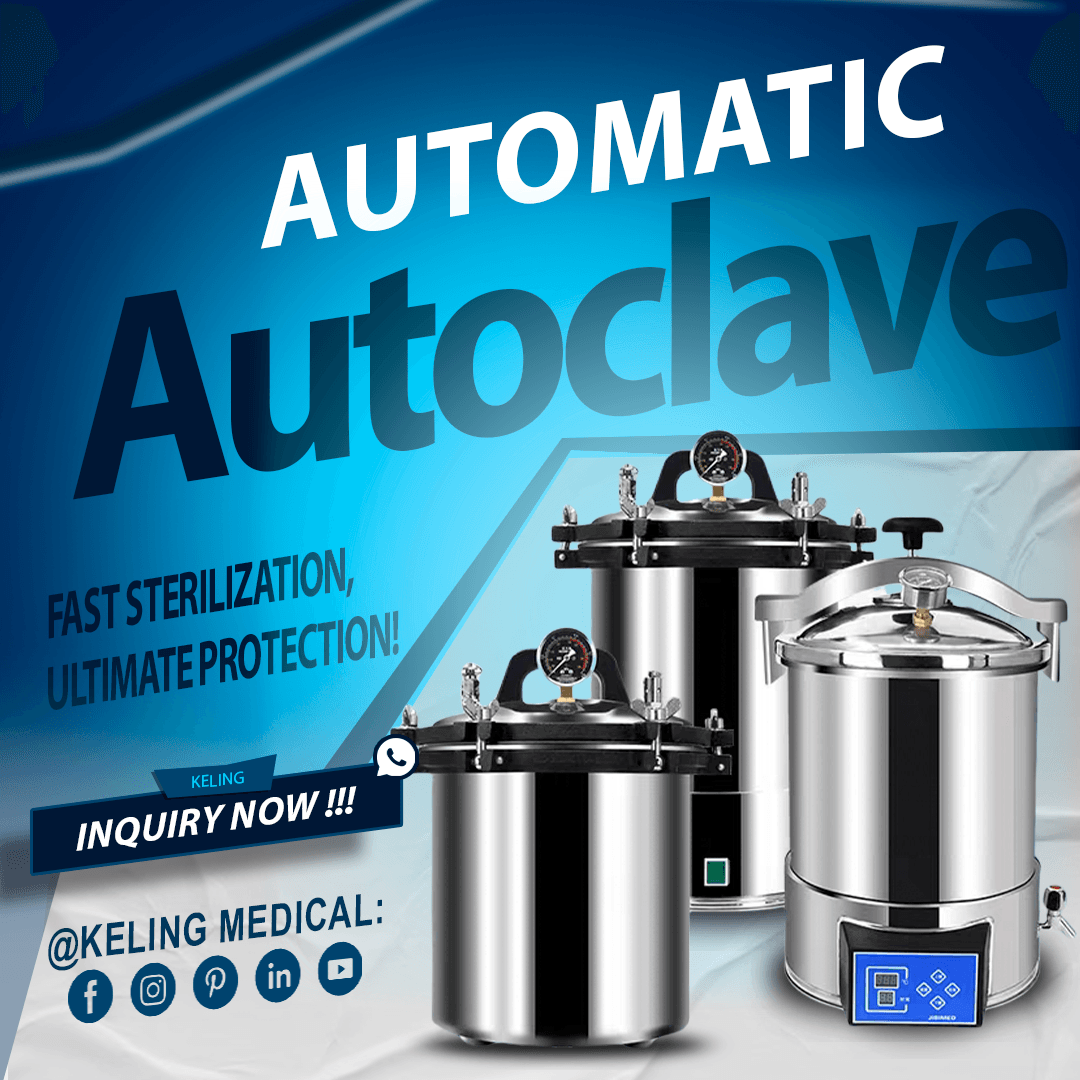
Co je autokláv? : Autoclaves sterilize medical tools by using pressurized steam to eliminate contaminants.
The process creates steam through water heating followed by pressurization to eliminate bacteria, viruses and spores.
Learn about the various autoclave models available such as gravity displacement, pre-vacuum, and steam-flush pressure-pulse systems.
For effective sterilization medical equipment must reach temperatures between 121°C and 134°C and maintain pressures of 15–30 psi.
Select compact benchtop models (10–20L) or large horizontal autoclaves (500–1,000L) depending on your specific requirements.
Grasp how cycle durations impact both wrapped and unwrapped instruments.
Select autoclaves constructed from 316L stainless steel to benefit from their extended durability and resistance to corrosion.
Select autoclave models that use minimal steam and water to lower operational expenses.
Choose autoclaves that offer dual-door configurations alongside vacuum systems and data logging capabilities to enhance their functionality.
A maintenance schedule should incorporate monthly leak tests along with quarterly solenoid valve inspections and yearly pressure vessel recertification.
Solve frequent problems like inadequate steam production or incomplete drying cycles through effective methods.
Autoclaves must meet the requirements of ISO 17665, EN 285, and FDA 21 CFR 880.6860 standards for quality assurance and compliance.
A sterilization validation process should incorporate biological indicators such as Geobacillus stearothermophilus spore tests to determine effectiveness.
Enable your autoclaves with IoT capabilities that support remote management and predictive maintenance functions.
The demand for eco-friendly sterilization solutions is expanding and energy-efficient models alongside water-saving systems can fulfill this need.
The selection of an appropriate autoclave sterilizer remains essential for both medical equipment distributors and procurement specialists. Knowledge of technical specifications together with procurement criteria and operational best practices enables you to deliver reliable and efficient sterilization solutions to your clients. Maintain your competitive advantage in the healthcare market by staying updated with the latest industry trends and innovations.
Q1: What is the optimal temperature for autoclave sterilization? A: The optimal temperature ranges from 121°C to 134°C, depending on the type of instruments and the sterilization cycle.
Q2: Jak často by se měla měnit těsnění autoklávu? A: Gaskets should be inspected quarterly and replaced every 1–2 years or if visible wear and tear are observed.
Q3: Can autoclaves sterilize heat-sensitive materials? A: Low-temperature autoclaves or alternative sterilization methods like plasma sterilizers are recommended for heat-sensitive materials.
Q4: What certifications should I look for in an autoclave? A: Ensure the autoclave complies with ISO 17665, EN 285, and FDA 21 CFR 880.6860 standards for quality and safety.
For more information or to discuss your autoclave needs, reach out to us today:
E-mail: inquiry@shkeling.com
WhatsApp: +86 182 2182 2482
Webové stránky: https://autoclaveequipment.com

Úvod Autoklávy používané v nemocnicích jsou jednou z nejdůležitějších investic do zdravotnické infrastruktury a slouží jako první linie obrany proti infekcím spojeným se zdravotní péčí. Důmyslné sterilizační zařízení je

Proces autoklávování slouží jako základní sterilizační postup používaný v lékařských, laboratorních a výzkumných zařízeních k ochraně skleněného nádobí a nástrojů prostřednictvím účinné sterilizace. Vysokotlaká pára během tohoto procesu odstraňuje choroboplodné zárodky.

Proces autoklávování slouží jako základní sterilizační postup používaný v lékařských, laboratorních a výzkumných zařízeních k ochraně skleněného nádobí a nástrojů prostřednictvím účinné sterilizace. Vysokotlaká pára během tohoto procesu odstraňuje choroboplodné zárodky.

Proces autoklávování slouží jako základní sterilizační postup používaný v lékařských, laboratorních a výzkumných zařízeních k ochraně skleněného nádobí a nástrojů prostřednictvím účinné sterilizace. Vysokotlaká pára během tohoto procesu odstraňuje choroboplodné zárodky.

Proces autoklávování slouží jako základní sterilizační postup používaný v lékařských, laboratorních a výzkumných zařízeních k ochraně skleněného nádobí a nástrojů prostřednictvím účinné sterilizace. Vysokotlaká pára během tohoto procesu odstraňuje choroboplodné zárodky.
Proces autoklávování slouží jako základní sterilizační postup používaný v lékařských, laboratorních a výzkumných zařízeních k ochraně skleněného nádobí a nástrojů prostřednictvím účinné sterilizace. Vysokotlaká pára během tohoto procesu odstraňuje choroboplodné zárodky.